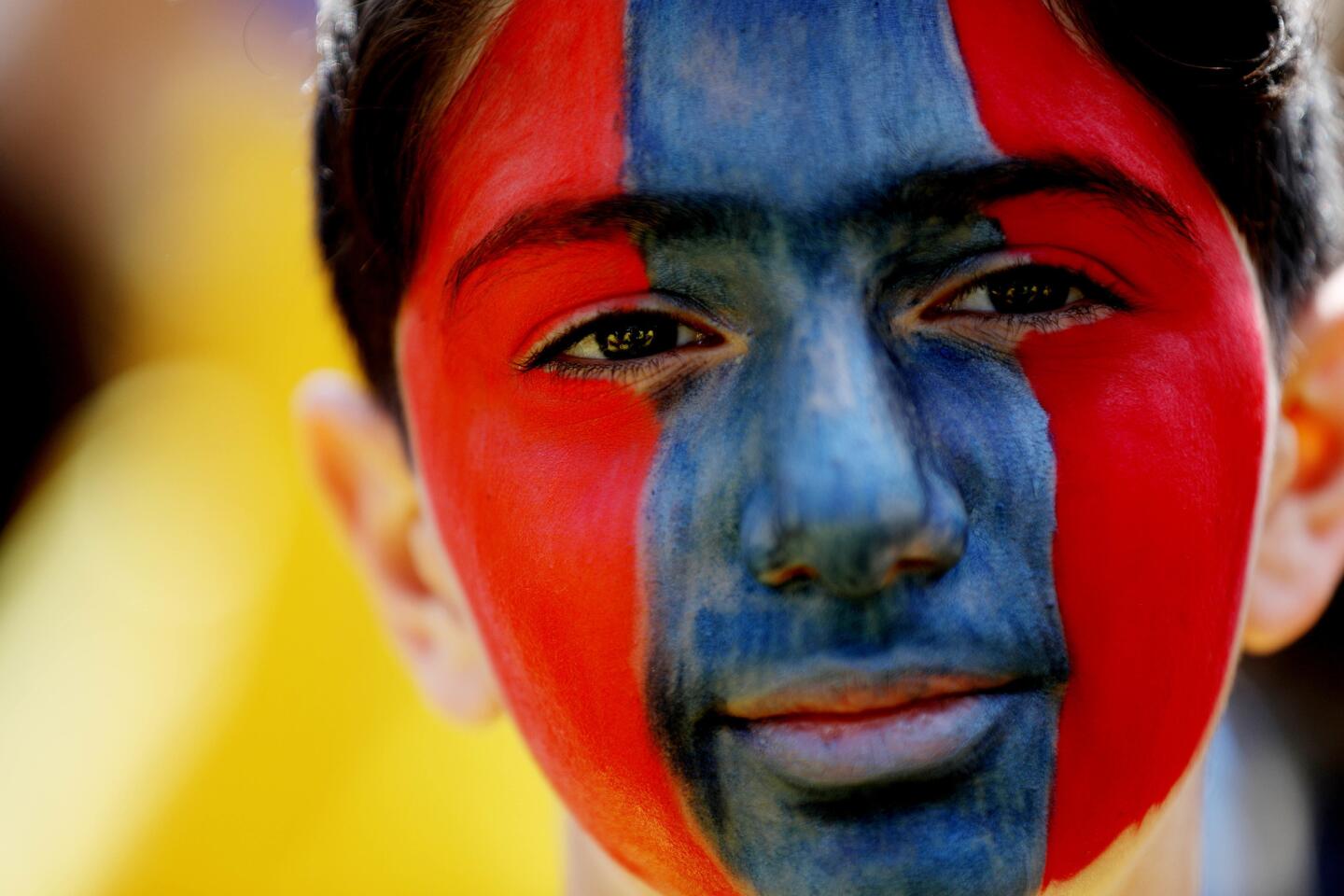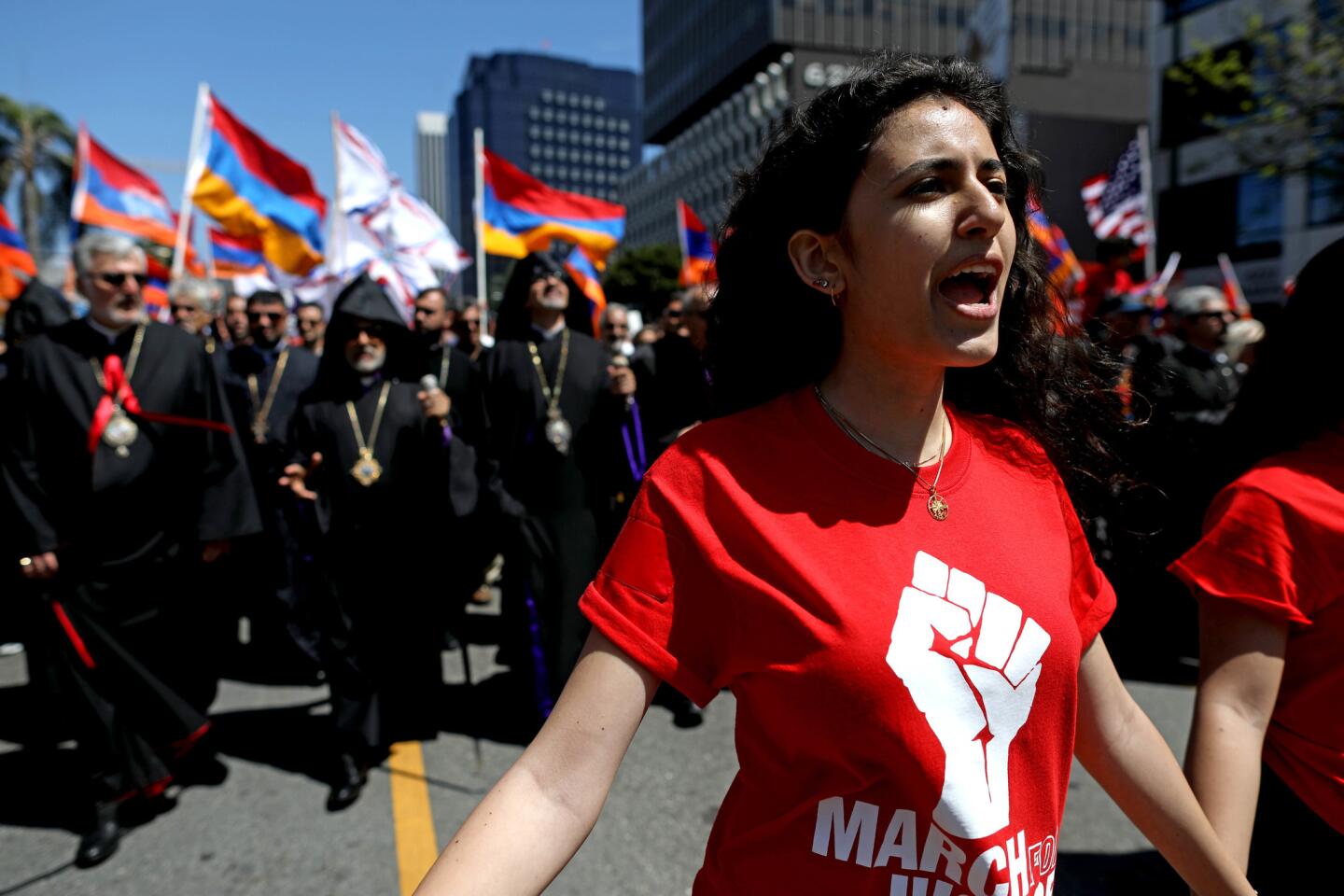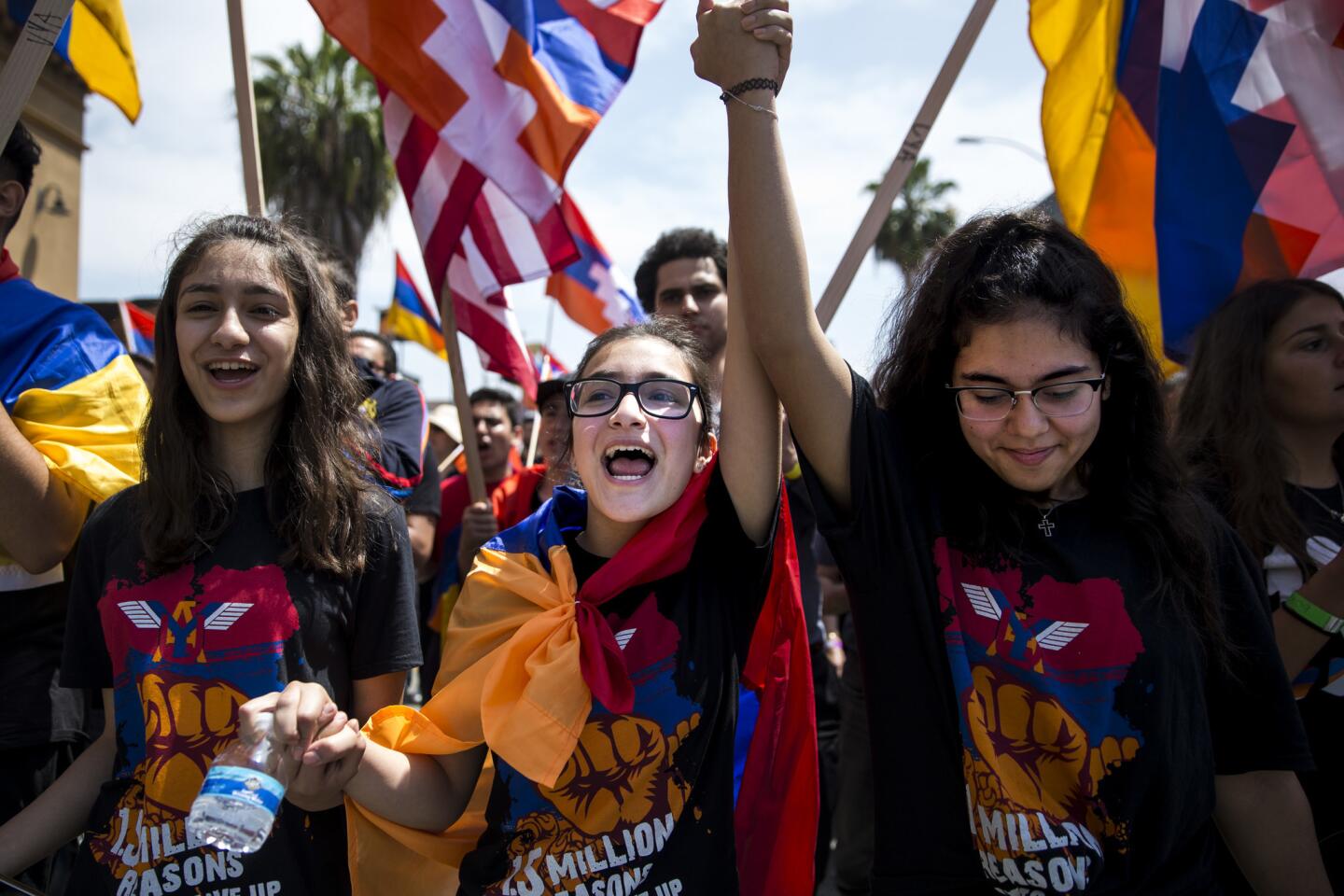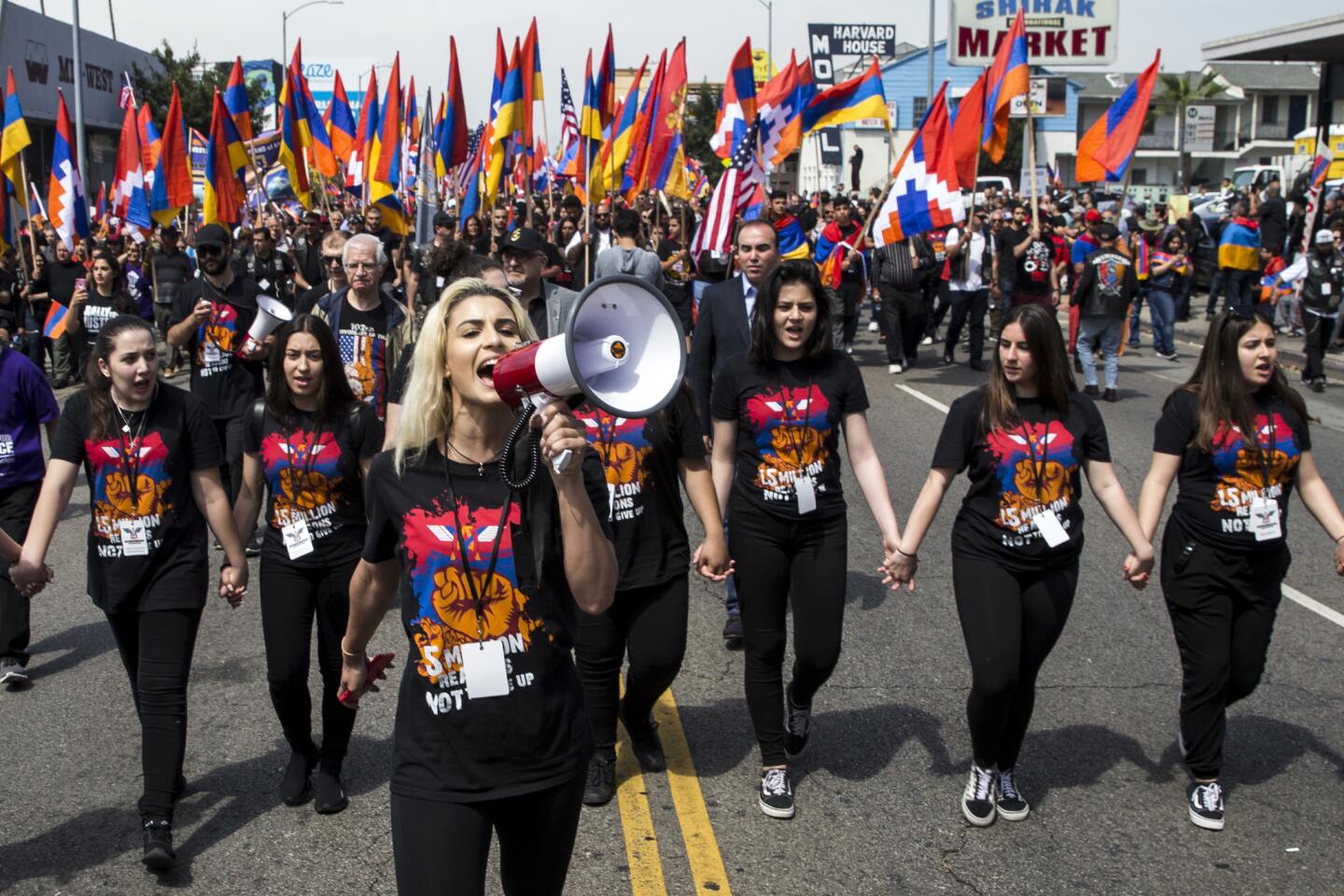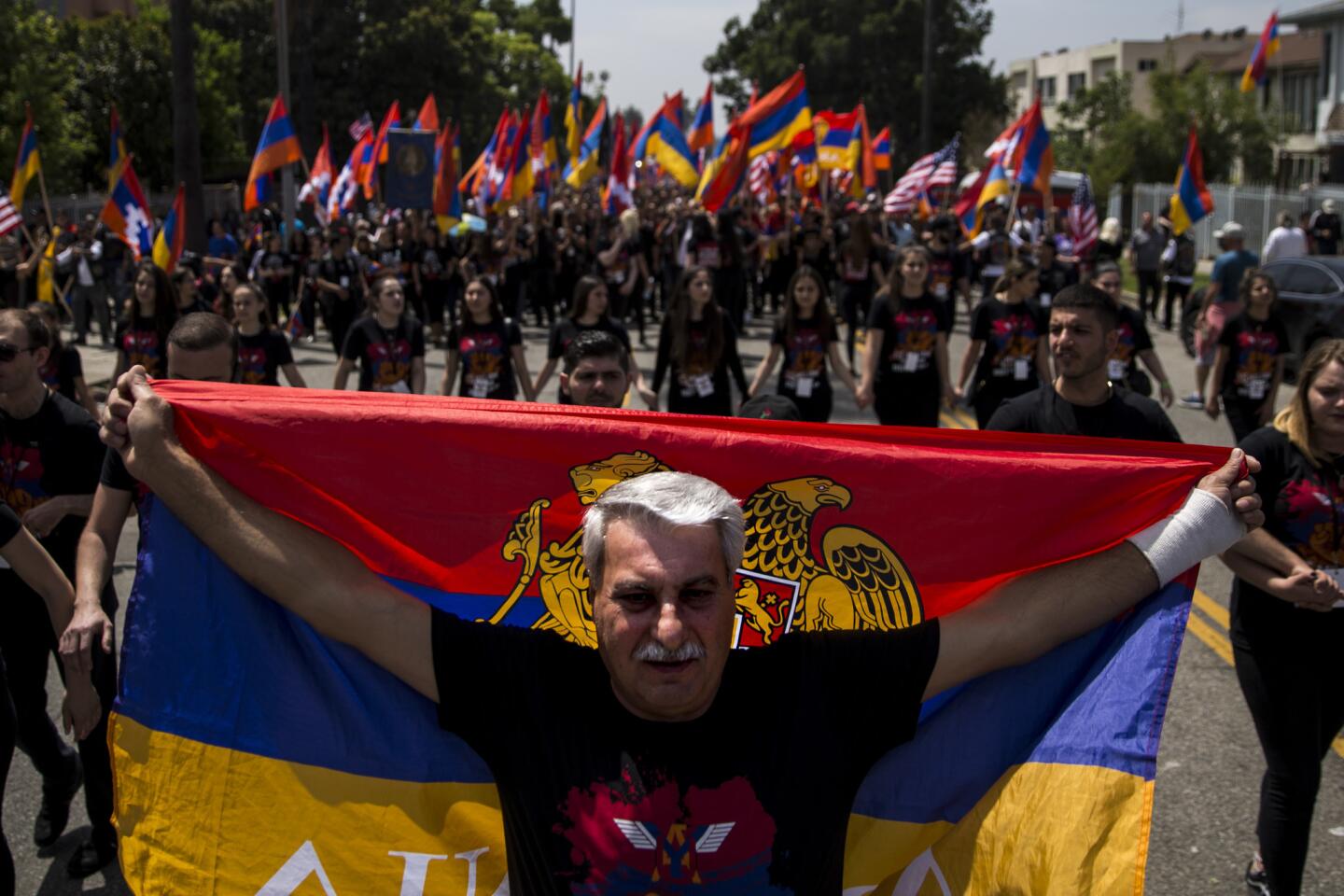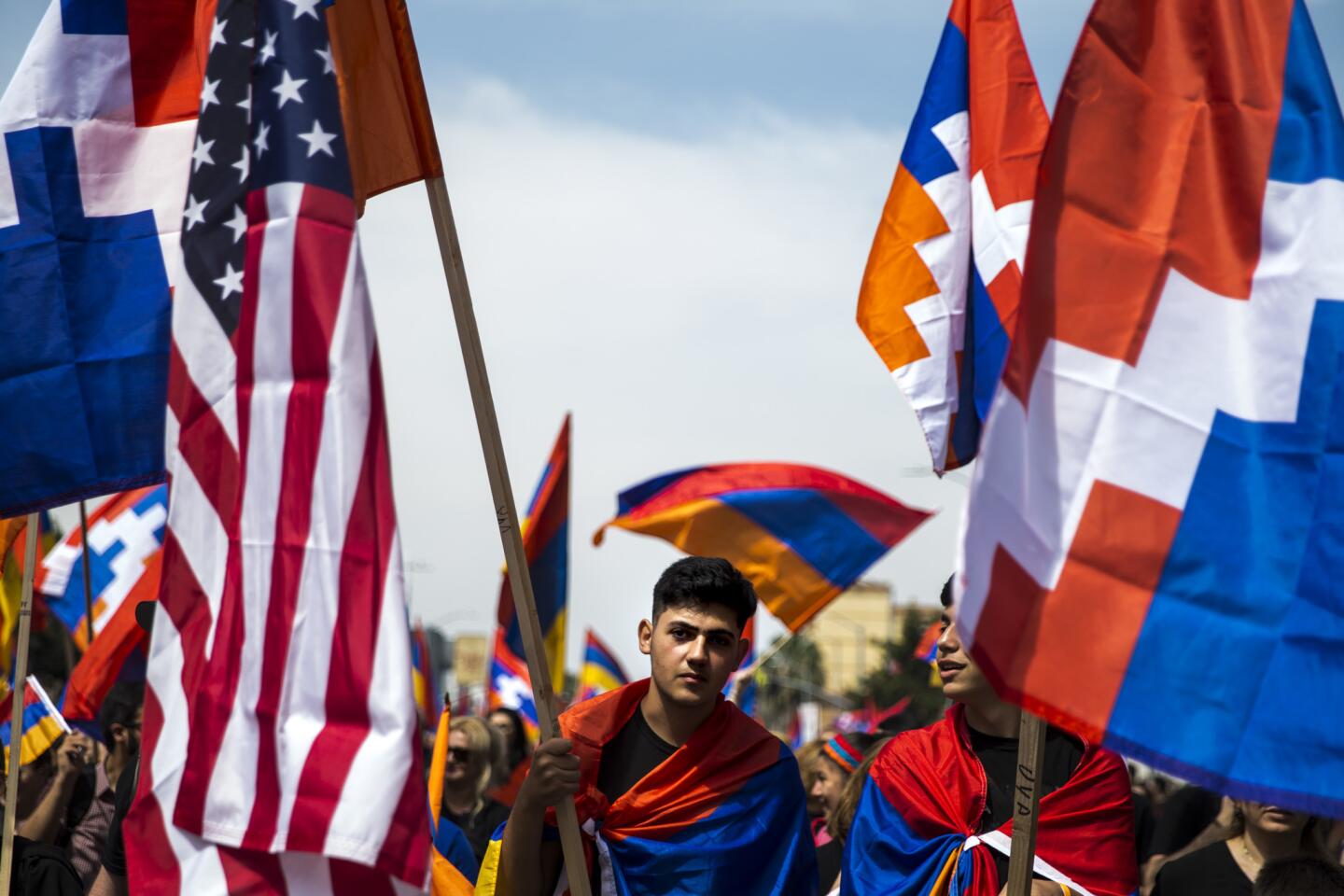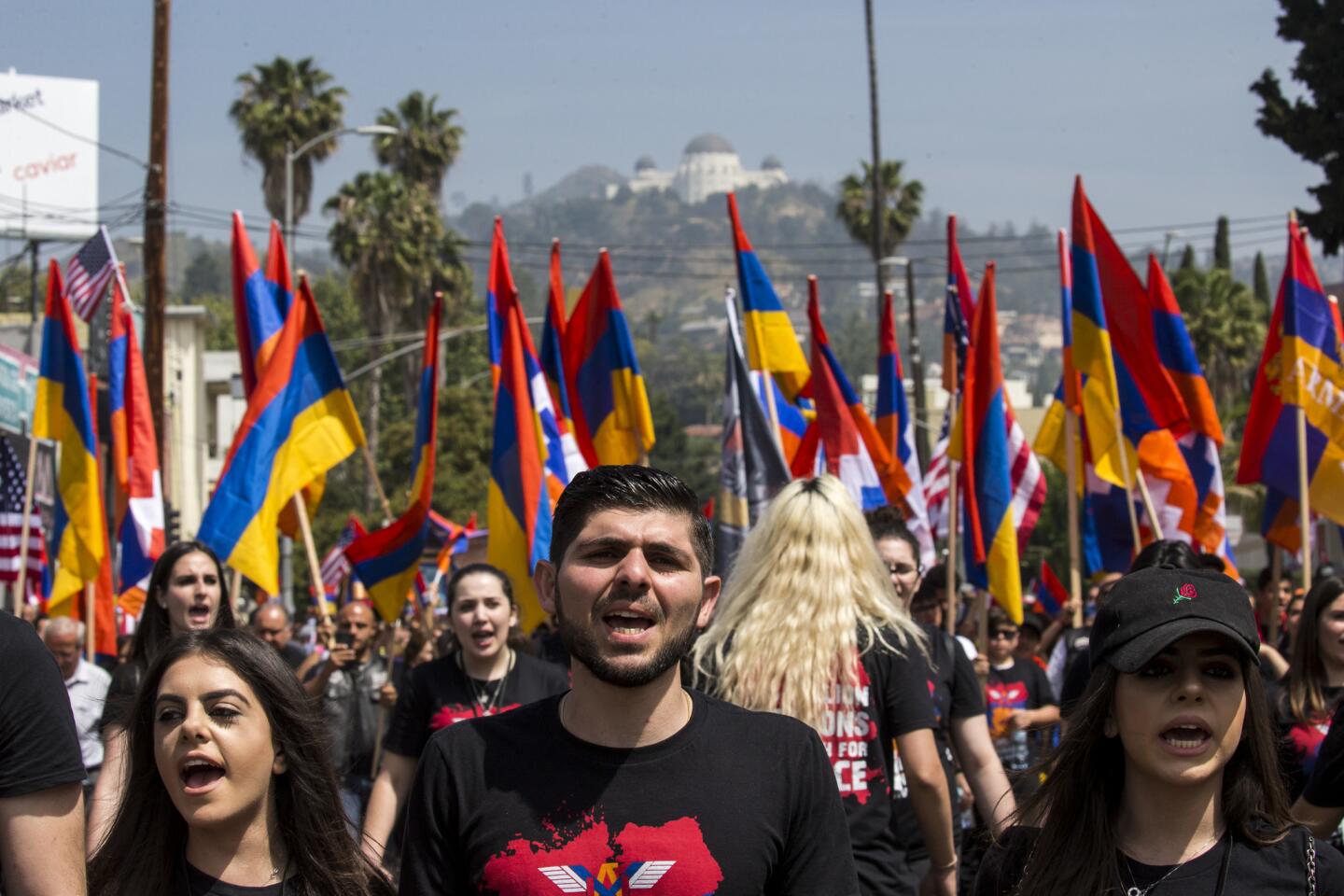Renewed by hope, thousands call for justice on the 103rd anniversary of the Armenian genocide

Thousands met at Hollywood and Western to march on the 103rd anniversary of the Armenian genocide.
- Share via
In a sea of protesters, Arsineh Sarkisian’s cry still rang through.
“Payqar, payqar! Minchev verj!”
Persist, persist. Until the end.
Every April, the 23-year-old student comes to Little Armenia to mark the anniversary of the Armenian genocide. On Tuesday, she joined tens of thousands of marchers along Hollywood Boulevard to honor the 1.2 million Armenians who were once rounded up and killed by the Ottoman Turkish government.
Those atrocities of 1915 are characterized by historians as a precursor to the Holocaust, but they have yet to be recognized by Turkey. Or by the United States because of political reasons.
So each year, in Los Angeles and beyond, the Armenian diaspora gathers in a solemn call for justice. The young and the old take to the streets in a sort of pilgrimage — draped in their Caucasus nation’s orange, blue and red colors. They wave flags and signs, and shout from megaphones until their voices crack.
“We are here representing our ancestors,” Sarkisian said as she marched alongside a group of friends. “It’s been so long, but we will never stop fighting.”
This year, the energy in the crowd was palpable. And it had to do with home.
Back in Armenia, just a day before, thousands of protesters did the unthinkable: They overthrew the prime minister, a man who had ruled the former Soviet state for 10 years. Though his term as president had ended, he continued to cling to power.
Nune Yenokyan of Tujunga followed the 11-day revolution online, as did many Armenians living abroad. She watched in suspense as demonstrators in the capital of Yerevan brought down Serzh Sargsyan with a mix of peaceful protests, road blockades, even the late-night clanging of pots and pans.
The morning of the Hollywood march, Yenokyan, 31, arrived with relatives. She said she felt inspired by the events in her home country. She and her husband are now thinking of returning to Armenia to be closer to her people.
“This gives us more hope, more strength,” she said. “If we are united we can achieve anything, including recognition of the genocide so these crimes against humanity never repeat.”
During the march, protesters varied on their definition of justice. Some called for reparations of land, others called for a formal acknowledgment, particularly from the United States.
No sitting president has formally recognized the genocide. That includes former President Obama, who promised he would before entering the White House.
In a statement this year, President Trump called it “one of the worst mass atrocities of the 20th century.”
“As we honor the memory of those who suffered, we also reflect on our commitment to ensure that such atrocities are not repeated,” the statement read.
Southern California is home to the largest Armenian community outside Armenia. Census data show about 200,000 people of Armenian descent live in Los Angeles County. There are memorials honoring the victims of the genocide in Montebello, Little Armenia and Glendale.
On Tuesday, a number of political leaders took the stage to support the protesters. City Councilman Paul Krekorian spoke of his great uncle, who was a math professor in eastern Turkey at the time of the genocide. He was seized by Turkish agents that summer.
“His throat was sliced and his tongue was cut out,” Krekorian said.
Mayor Eric Garcetti, who led the march, told the audience that Los Angeles supports their fight for recognition.
“You don’t have to be Armenian to know what a human tragedy looks like,” Garcetti said. “This was an Armenian tragedy and a human tragedy and all of us will say never again.”
More than a century after the genocide, most survivors have died, but their children, grandchildren and great-grandchildren continue to march.
Among them was Albert Agadjanian of Pasadena, a member of the motorcycle club the Armenian Brigade. He stood at the front of the march, a stocky presence in a leather jacket holding tight to an Armenian flag.
Growing up, Agadjanian always knew his great grandparents on his father’s side had perished in the genocide. But his grandparents never spoke of it. Neither did his father.
“It was too painful,” Agadjanian said.
Until this day, he doesn’t know how they died. The sorrow and the anger cut deep.
But looking around at the mass of protesters lining Hollywood Boulevard, Agadjanian said he felt good about the future. Better than he has in a long time.
Behind him, a line of school-age boys and girls locked hands, ready to march.
“These young people respect our history, and that brings me comfort,” Agadjanian said. “That means the new generation that comes after them will do the same.”
UPDATES:
7:20 p.m.: This article has been updated throughout with additional background and quotes from the march.
2:45 p.m.: This article was updated with comments from L.A. Mayor Eric Garcetti and other demonstrators.
This article was originally published at 8:55 a.m.
More to Read
Sign up for Essential California
The most important California stories and recommendations in your inbox every morning.
You may occasionally receive promotional content from the Los Angeles Times.
